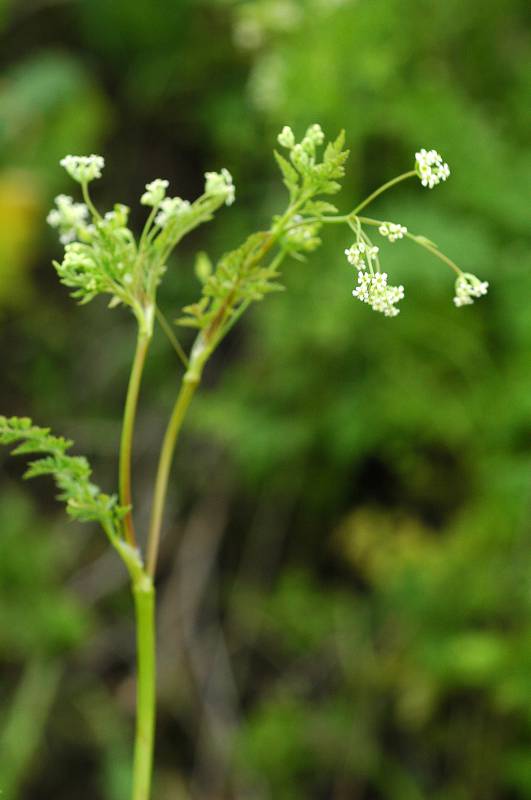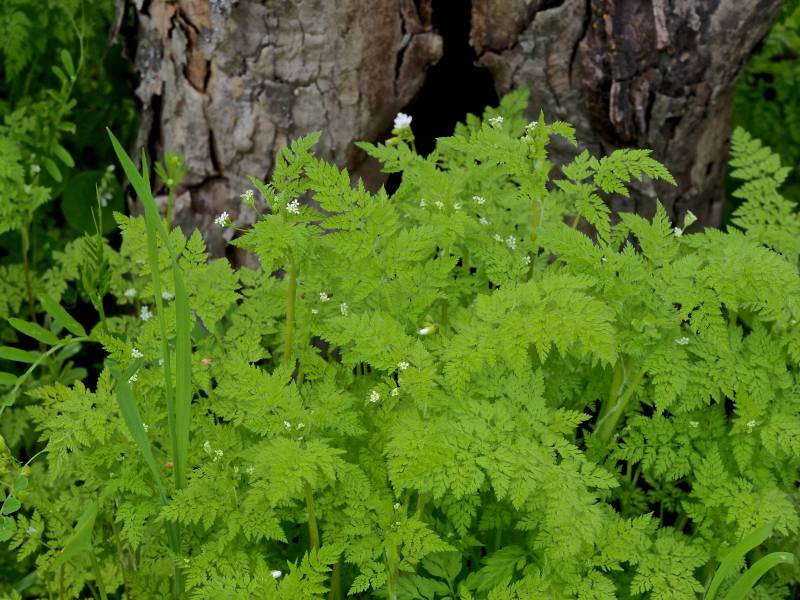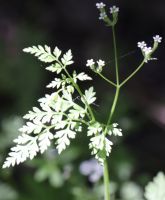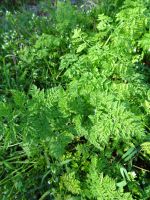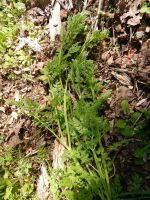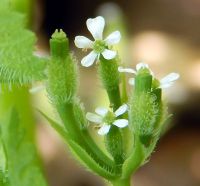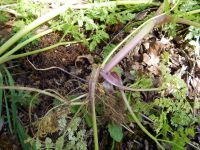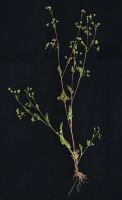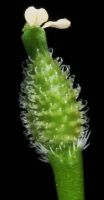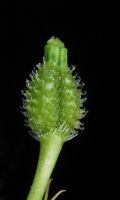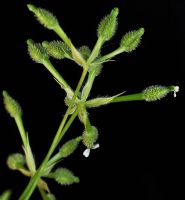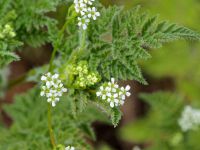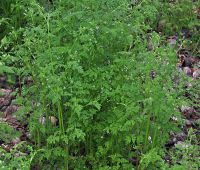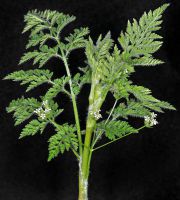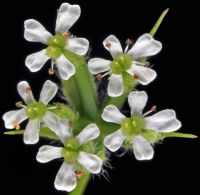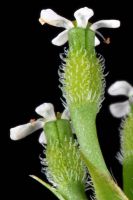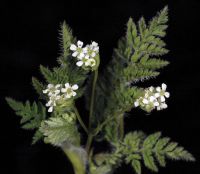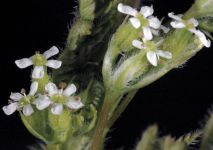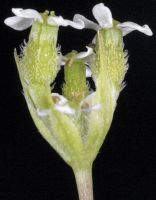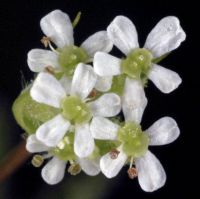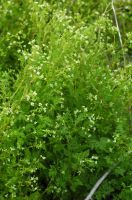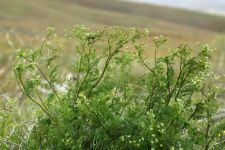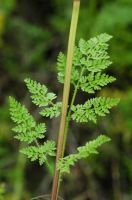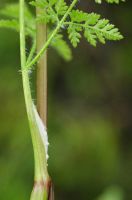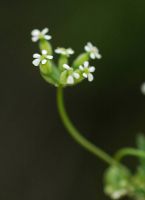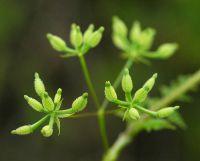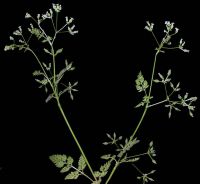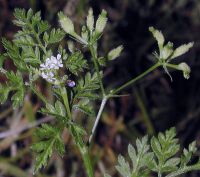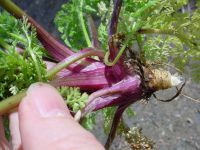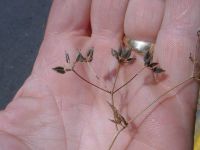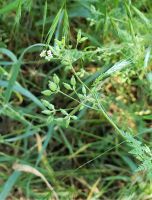Distribution: Occurring on both sides of the Cascades crest in Washington; British Columbia to California, east across much of the United States and parts of Canada to the Atlantic Coast.
Habitat: Roadsides, forest edges, wastelots, and other disturbed areas where often seasonally moist.
Flowers: April-July
Origin: Introduced from Eurasia
Growth Duration: Annual
Conservation Status: Not of concern
Pollination: Flies, beetles, wasps
Ovary inferior, 2-celled, the stylopodium broadly conic; fruit oblong-elliptic, 4-9 mm. long and 2-5 mm. wide, the ribs all nearly alike, thickened but not winged.
Leaves basal and cauline, with short, stiff hairs, gradually reduced upward, petiolate, the blade bipinnately dissected, with small ultimate segments.
Peduncles slender, borne opposite the upper leaves; rays 3-6, 1-2.5 cm long; involucre wanting; involucel of a few small lanceolate bractlets; umbellets with 3-7 flowers, the calyx obsolete, the five petals white; the pedicels short, each with a ring of short, flattened hairs at the summit.
Fruit ovoid, 4 mm. long, the body covered with short, thick, hooked hairs, the short, stout beak unarmed.
Publication: Fl. Taur.-Caucas. 1: 230 1808.
Anthriscus scandicina Mansf. [HC]
Anthriscus vulgaris
Scandix anthriscus
PNW Herbaria: Specimen records of Anthriscus caucalis in the Consortium of Pacific Northwest Herbaria database
WA Flora Checklist: Anthriscus caucalis checklist entry
OregonFlora: Anthriscus caucalis information
E-Flora BC: Anthriscus caucalis atlas page
CalPhotos: Anthriscus caucalis photos

